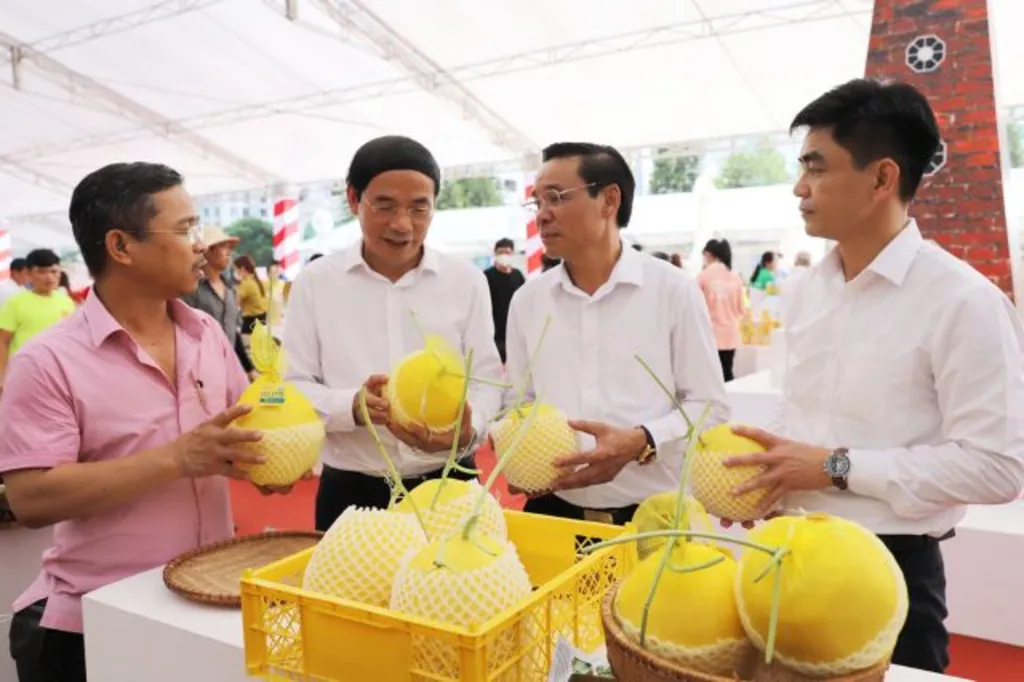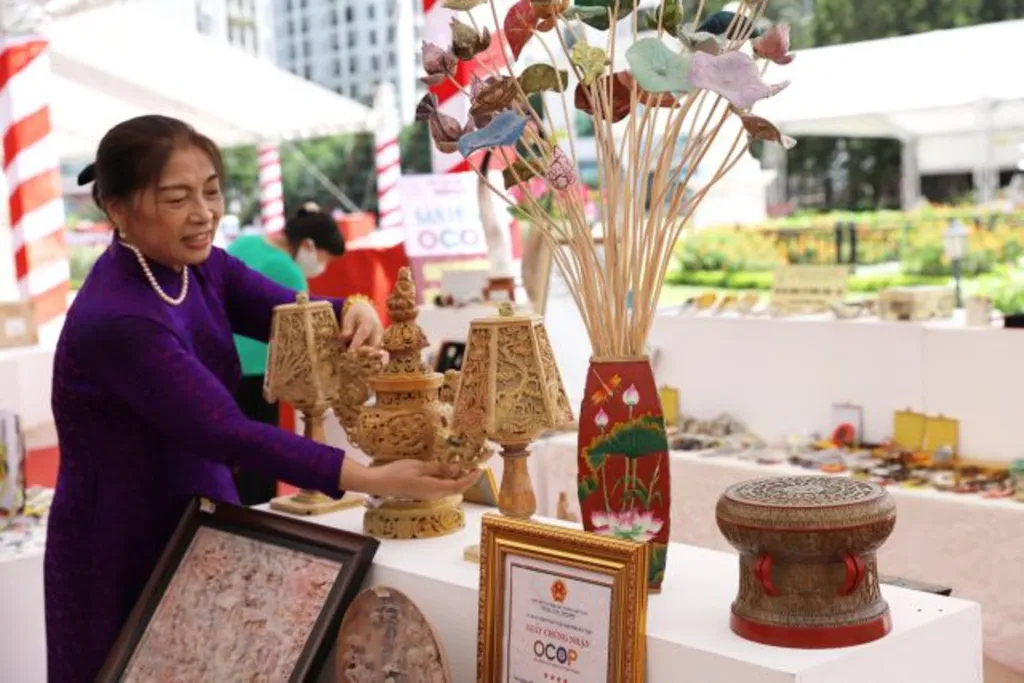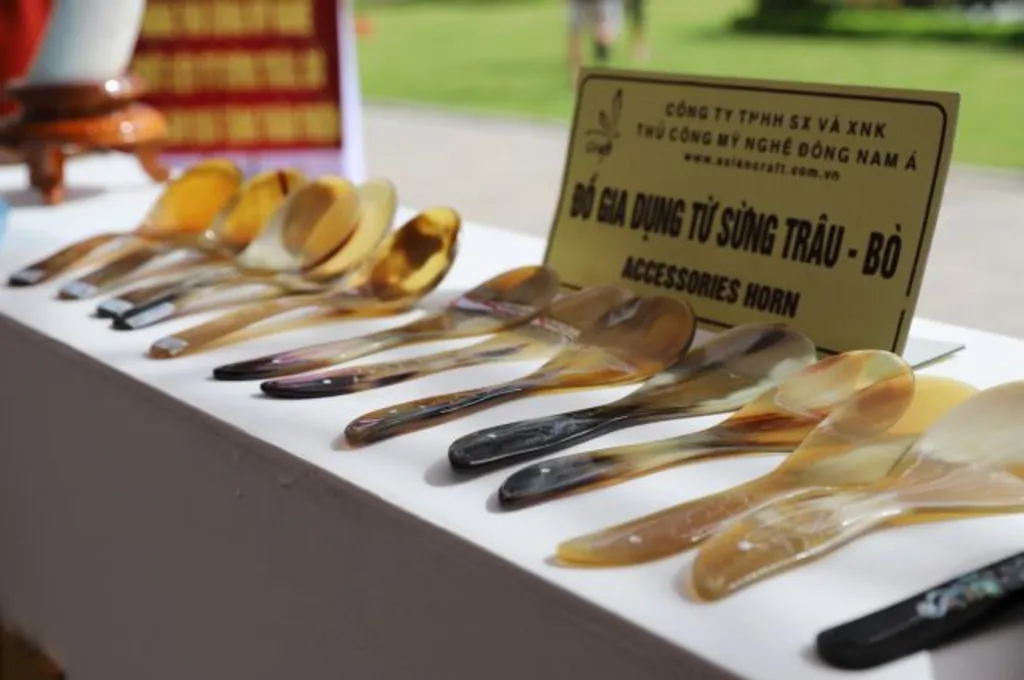 Economy
Economy

 |
| Chu Phú Mỹ, director of the municipal Department of Agriculture and Rural Development cum chief of Hà Nội's Coordinating Office for the New-Style Rural Area Building Programme. — VNS Photo |
{ "id": "qRPmeuqmOI", "type": "myToolImages", "data": { "data": "" } }
HÀ NỘI — The capital city recognised nearly 600 One Commune, One Product (OCOP) products in 2021, according to a ceremony in the city on July 23.
The ceremony to announce the recognition saw the participation of Vương Đinh Anh, deputy chief of the Central New Rural Coordination Office; Chu Phú Mỹ, director of the municipal Department of Agriculture and Rural Development cum chief of Hà Nội's Coordinating Office for the New-Style Rural Area Building Programme and representatives of various departments and sectors.
In his speech, Chu Phú Mỹ said the OCOP products were from 171 producers. Of those, 367 products were rated four stars, and the remaining were rated three.
 |
| Representatives of the municipal departments, agencies and sectors joined the ribbon-cutting ceremony to open an exhibition promoting the city's OCOP products in 2022. — VNS Photo |
The newly certified products in 2021 demonstrated the strong efforts made by local departments, sectors, localities and producers to carry out the OCOP programme in the city, Mỹ said.
He asked producers to continue improving the quality, design and packaging of the recognised products and enhance connectivity with other stakeholders in value chains to develop their products further.
 |
| Chu Phú Mỹ (third from left) visited a booth at the exhibition. — VNS Photo |
So far, Hà Nội has certified 1,649 OCOP products, including four products rated five stars, 1,098 others rated four stars, and 534 rated three stars.
Deputy Chief of the office Ngọ Văn Ngôn said Hà Nội is taking the lead nationwide in terms of the numbers of OPOP products and five-star OCOP products.
 |
| So far, Hà Nội has certified 1,649 OCOP products. — VNS Photo |
{ "id": "_9WXRJwbnx", "type": "myToolImages", "data": { "data": "" } }
In addition to evaluating and classifying OCOP products, Hà Nội has also paid special attention to and organised events, fairs, and seminars to promote OCOP products in domestic and international markets. Many showrooms for OCOP products have also been opened in tandem with craft villages and rural tourism development.
Ngôn said in order to help producers tackle difficulties caused by the pandemic and resume production and business activities, his office has hosted many investment and trade promotion events and assisted them in taking part in similar activities in other localities such as an OCOP product forum of the Mekong Delta held in Đồng Tháp Province and the Vietnamese fruit and OCOP products festival in Sơn La Province.
{ "id": "4vI2Pht53Z", "type": "myToolImages", "data": { "data": "" } }
 |
| Local people shop for OCOP products at the exhibition. — VNS Photo |
From now to the end of 2022, four other events introducing OCOP products of Hà Nội and that of other provinces in the northern, central, Central Highlands and southern regions will also be held in the city's different districts. To date, 488 OCOP products of 26 districts and communes have registered to participate in the event, much higher than the 400 expected.
By 2025, the city targets to complete the assessment and rating for at least 2,000 OCOP products, 3 per cent of which will be potential 5-star products.
 |
| Housewares made from cow horns are displayed at the exhibition. — VNS Photo |
{ "id": "2zBd2hNrwC", "type": "myToolImages", "data": { "data": "" } }
It also aims to have all communes that meet advanced criteria of the new-style rural area building programme to have OCOP products, and at least 70 per cent of OCOP product makers being co-operatives, co-operative groups and businesses.
The OCOP programme was initiated by the Ministry of Agriculture and Rural Development in 2008. It is an economic development programme for rural areas and also to help implement the national target programme on new-style rural area building.
OCOP products are made basing on the combination of local resources, traditional culture, and advanced technology, thus promoting product diversification, quality, packaging, and origin traceability.
The article is published with coordination of the Coordination Office of the New-Style Rural Development Programme in Hà Nội. — VNS